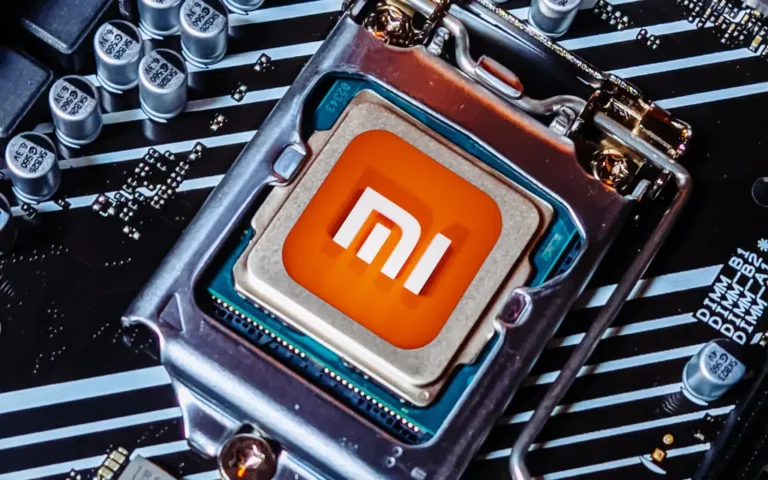
Recently, a leak surfaced suggesting that Xiaomi is now developing its own chipset, which the company has named “Xring.” Let us tell you that its purpose is not only technological self-reliance but also to avoid US sanctions like those faced by Huawei. In this article, we’ll explore Xiaomi’s entire strategy in detail—why this step is important, how it follows the paths of Apple, Google, and Huawei, and what impact it could have on the global semiconductor market in the coming times.
What is Xiaomi’s New Strategy?
Xiaomi, one of the most popular smartphone brands in India and worldwide, is now entering the world of chipset manufacturing. As mentioned above, the company has named its new chipset project “Xring.” According to reports, Xiaomi is creating a separate company under the name Xiaomi Xring that will manufacture these chipsets.
This Article Will Tell You:
- Why did Xiaomi create a separate company?
- What losses did Huawei suffer, and how is Xiaomi avoiding them?
- Why is it being compared to Google Tensor?
- What will be the impact of Xring on the market?
Why Did Xiaomi Create a Separate Company for Xring?
According to tech tipster Jukanlosreve, Xiaomi has formed a team of more than 1,000 employees for the Xring chipset division. But the key point is that this team will operate separately from Xiaomi’s main company. Its primary goal is to stay out of the watchful eyes of the US.
Huawei was once poised to overtake Apple and Samsung. But when the US government imposed trade sanctions, its growth halted and its market share declined rapidly. Xiaomi doesn’t want the same fate, which is why it wants to give Xring a separate identity.
Is Xiaomi Following in Tensor’s Footsteps?
Absolutely. Google created its Tensor chipset for the same reason—to have control over both hardware and software and reduce dependency on Qualcomm. Xiaomi’s step is similar.
| Brand | Chipset Series | Main Objective |
|---|---|---|
| Apple | A-Series | Performance and control |
| Tensor | Android-centric features | |
| Samsung | Exynos | In-house processing |
| Huawei | Kirin | Market leader until US ban |
| Xiaomi | Xring | Avoid US scrutiny + in-house innovation |
Is This a Threat to Qualcomm and MediaTek?
The semiconductor market is nearly a duopoly—Qualcomm and MediaTek are its major players. But if Xiaomi uses Xring only in its own phones, it won’t pose a huge threat.
If Xiaomi installs Xring processors in its Redmi and Mi series, it won’t have to negotiate with Qualcomm or wait on MediaTek’s production timelines.
Is the Road Easy for Xiaomi?
Making the Xring chipset will be highly challenging for Xiaomi, technically. Due to the ongoing tech war between the US and China, Xiaomi might face difficulty accessing advanced semiconductor technologies and machinery. Companies like Huawei and SMIC have made some progress, but they still lag behind giants like Qualcomm, MediaTek, and TSMC. Xiaomi could face similar technical and supply chain challenges. Moreover, any new US sanctions could impact this project. Hence, the road for Xiaomi is not easy but long and full of struggle.
What is the Future of Xiaomi’s Xring Chipset? This is the Beginning of a Long Race
The Xring chipset is a major step toward Xiaomi’s technological self-reliance. The company is preparing to become not just a smartphone maker but a semiconductor developer. Like Google and Apple, Xiaomi also wants to strengthen its hardware-software ecosystem. However, the US-China trade war and technological restrictions could pose significant challenges. From Huawei’s experience, Xiaomi has learned that being self-reliant is now essential. If Xring is successful technically, Xiaomi could establish a strong position in the global tech race.
Conclusion
Through the Xring chipset, Xiaomi has taken a major step toward developing its own technology. The company wants to keep it separate from its core unit to avoid US sanctions. This strategy appears to be inspired by chipsets like Google’s Tensor and Huawei’s Kirin. It will give Xiaomi greater control over its hardware and software, reducing reliance on Qualcomm and MediaTek. However, the ongoing tech war between the US and China will bring several challenges for Xiaomi. The success of Xring will depend on whether Xiaomi can build a competitive and reliable chipset or not.